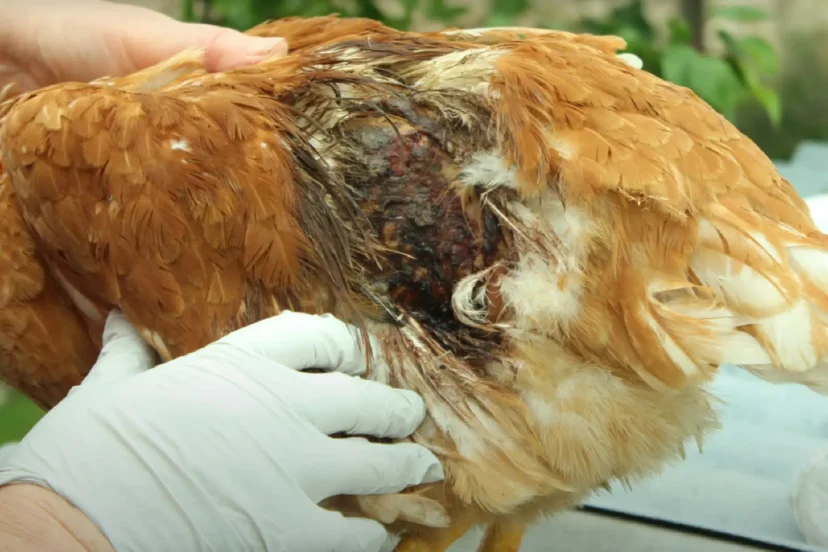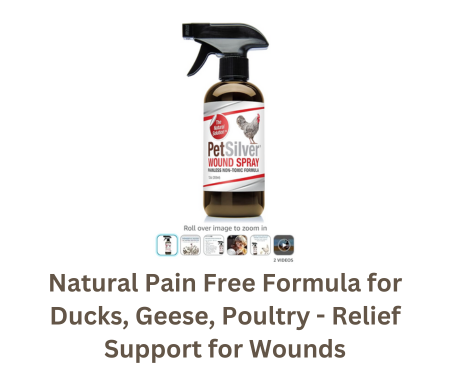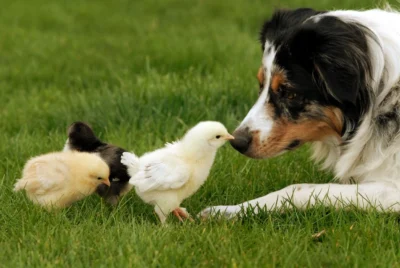Chicken Wound Care: Immediate Steps for Wound Management
Dealing with a chicken wound can be challenging and distressing for poultry owners. Whether your feathered friend has suffered an injury from a predator or a simple accident within the coop, the urgency and proper handling of the situation are crucial to ensure their well-being. Finding yourself in this situation can be overwhelming, especially if you’re unsure about the immediate steps for effective chicken wound management.
However, with the right knowledge and guidance, you can confidently navigate this ordeal, ensuring the best possible care for your beloved chickens.
In this article, we’ll delve into the essential steps you need to take to ensure your wounded chickens receive the care they desperately need, alleviating the stress and uncertainty that often accompanies such situations.
Common Causes of Chicken Wounds
Chicken Wounds from Pecking
Chicken wounds from pecking are a frequent issue in poultry flocks. This type of injury is often a result of aggressive behavior, which can be triggered by stress, overcrowding, or competition for food and resources.
Moreover, pecking can lead to various wounds, including skin abrasions, feather loss, and, in severe cases, deep tissue injuries. These wounds are most commonly found on the head, back, and near the tail.
Chicken Wounds from Mating
Mating wounds in chickens typically occur in flocks that include roosters. The rooster causes these injuries during mating, where the rooster’s claws and beak can accidentally harm the hen. Common areas for mating wounds include the back, head, and neck of the hens.
While some mating behavior is normal, excessive aggression or frequent mating leading to wounds must be addressed. This can involve managing the ratio of hens to roosters, providing more space, and ensuring the roosters’ nails are trimmed to prevent severe injuries.
Chicken Wounds from Exposed Nails or Edges
Wounds caused by exposed nails or sharp edges in the chicken’s environment are another common issue. Chickens can easily get cut or scratched by protruding nails, sharp metal edges, or broken fixtures in their coop or run. These injuries can range from minor scratches to deep lacerations.
Chicken Wounds from Predators’ Attack
Predator attacks are a significant concern for chicken owners, especially in rural or semi-rural areas. Common predators include foxes, raccoons, dogs, cats, and birds of prey. Injuries from these attacks can be severe and often fatal. Wounds can include punctures, lacerations, and trauma from being grabbed or shaken.
Preventing predator attacks involves securing the chicken coop and run with predator-proof fencing, ensuring there are no gaps or weak points where predators can enter, and providing a secure enclosure for the chickens, especially at night.
Read also: Protecting Your Flock: Top Chicken Predators and Prevention Strategies
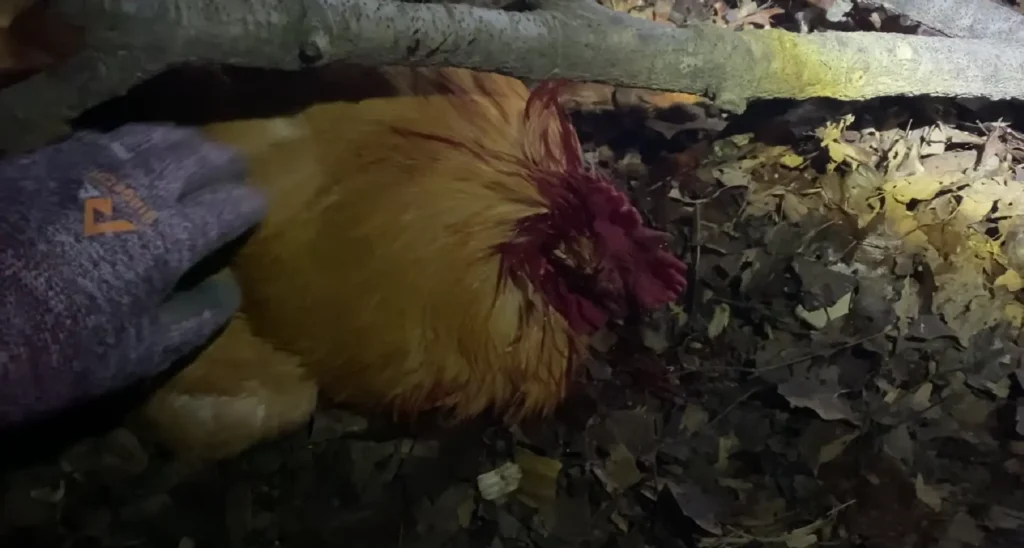
Immediate Steps for Chicken Wound Management
1. Assessing the Severity of Chicken Wound
First, you need to carefully examine the wound. Look closely to assess its severity. Is the wound deep? Is there profuse bleeding? Does your chicken seem to be in severe pain or shock? If you answer ‘yes’ to any of these questions, it’s time to seek veterinary care immediately. A professional assessment is vital in severe cases to prevent complications and ensure proper treatment.
2. Stabilizing the Injured Chicken
To prevent further injury and to minimize the stress caused by movement, it is important to stabilize the injured chicken. Gently handle the chicken and keep it in a safe and quiet environment. If possible, place it in a separate enclosure away from other chickens to minimize potential disturbances.
Providing a calm and stress-free environment is essential for the chicken’s recovery. Limiting its movement will help reduce pain and prevent worsening of the injury. Ensure the enclosure is clean, well-ventilated, and provides adequate warmth for the chicken’s comfort.
3. Cleaning the Chicken Wound
Once you’ve assessed the wound and determined it’s manageable without immediate veterinary intervention, your next step is cleaning it.
Before proceeding with chicken wound treatment, ensure you have the necessary supplies readily available. These supplies may include clean water, antiseptic solution, sterile gauze or cotton pads, bandages, and tweezers.
When selecting an antiseptic solution, opt for one that is safe for animal use and specifically formulated for wound care. Avoid using harsh chemicals or substances that may further irritate the wound. I also advise wearing disposable gloves to maintain hygiene and prevent spreading any potential infections.
When cleaning the wound, gently flush it with clean water to remove debris or foreign objects. Use a mild antiseptic solution to disinfect the area and prevent infection. Carefully pat the wound dry with sterile gauze or cotton pads, being cautious not to apply excessive pressure that may cause pain or further damage.
Once the wound is clean and dry, apply an appropriate dressing to protect it from further contamination. Secure the dressing with a bandage, ensuring it is not too tight to restrict blood circulation. Regularly monitor the wound for any signs of infection or deterioration and seek veterinary advice if necessary.
4. Applying Treatment
After cleaning the wound, it’s time to apply treatment. Use an appropriate antibiotic ointment to help prevent infection and aid in healing. Cover the wound with sterile gauze if it is large or in a location where it can get dirty quickly. Secure the gauze with a bandage, but be careful not to wrap it too tightly. You want to avoid restricting your chicken’s movement or blood flow, which can hinder recovery.
If you’re looking for an effective treatment for your poultry’s wounds or burns, consider the PetSilver Wound Spray Chicken & Rooster Formula. This product, made in the USA and vet-formulated, is a standout choice for your ducks, geese, and other poultry. The natural, pain-free formula is specifically designed to offer relief and support healing
5. Dressing the Wound for Optimal Healing
A non-adherent pad is an ideal choice for dressing chicken wounds. These pads are designed to minimize sticking to the wound, reducing discomfort during dressing changes. The non-adherent pad should be large enough to cover the entire wound adequately.
Secure the dressing in place with a bandage or adhesive tape. It is essential to ensure that the dressing is applied snugly but not too tight. A dressing that is too tight can impede proper circulation and cause discomfort to the chicken. On the other hand, a loose dressing may not provide adequate protection and can allow contaminants to enter the wound.
6. Preventing Infection
The final step in wound management is preventing infection, which is crucial for a smooth recovery. Keep the wound area clean and dry at all times. Monitor the wound daily for signs of infection, such as increased redness, swelling, or discharge. If you’ve applied a bandage, change it regularly to maintain cleanliness. If you notice signs of infection or the wound does not seem healing, consult a veterinarian.
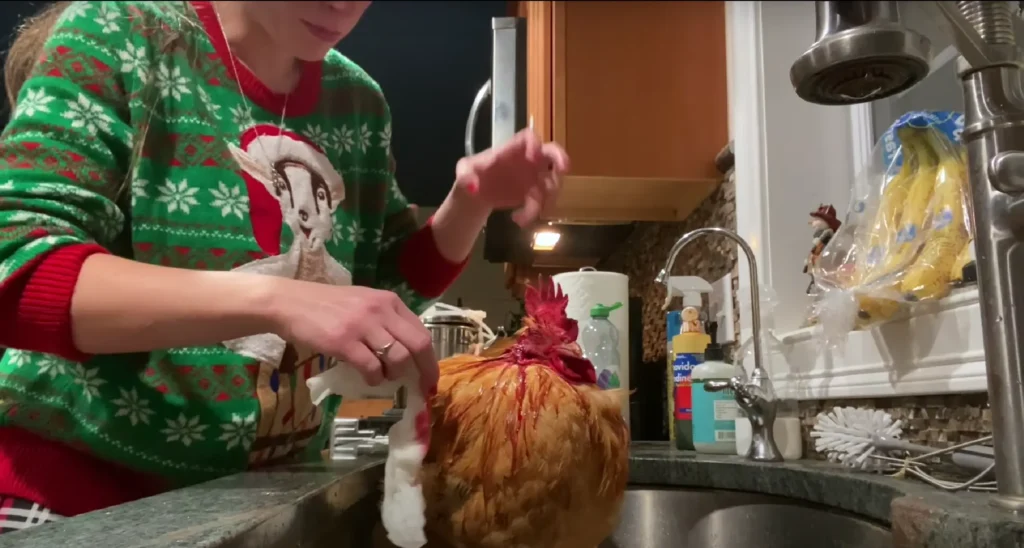
Post-Treatment Care for Chicken Wounds
After successfully managing the initial treatment of your chicken’s wound, post-treatment care becomes crucial for a full and speedy recovery. Here are vital steps to ensure effective post-treatment care:
1. Monitor the Healing Process
- Observation: Regularly check the wound for signs of healing. This includes reduced redness, swelling, and the formation of new tissue.
- Behavioral Changes: Keep an eye on your chicken’s behavior. A return to normal activities like eating, walking, and interacting with the flock indicates good recovery progress.
2. Chicken Wound Maintenance
- Cleanliness: Keep the wound area clean and dry. Dirt and moisture can lead to infection, so maintaining a clean environment is essential.
- Bandage Changes: If you’ve applied a bandage, change it regularly – ideally once a day or as a veterinarian advises. This prevents dirt accumulation and allows you to monitor the wound closely.
3. Nutritional Support
- Balanced Diet: Ensure your chicken receives a well-balanced diet rich in nutrients. Proteins, vitamins, and minerals are vital for healing.
- Hydration: Adequate water intake is also crucial. Ensure your chicken has access to clean, fresh water at all times.
4. Managing Pain and Discomfort
- Observation: Watch for signs of pain or discomfort, such as reluctance to move, decreased appetite, or unusual vocalizations.
- Veterinary Advice: Consult with a veterinarian for appropriate pain management strategies if you suspect your chicken is in pain.
5. Preventing Recurrence or Infection
- Environmental Adjustments: Modify the chicken’s environment to prevent the recurrence of injuries. This might include removing hazards or improving living conditions.
- Infection Signs: Be vigilant for signs of infection, such as increased warmth, oozing, or foul smell from the chicken wound. If you notice any of these signs, consult a veterinarian immediately.
6. Isolation if Necessary
- Separation: In some cases, isolating the injured chicken from the rest of the flock can be beneficial to prevent pecking and allow for uninterrupted healing.
- Comfortable Space: Provide a comfortable, stress-free space for your chicken to recover if isolation is necessary.
7. Gradual Reintroduction
- Slow Integration: Once the wound has healed significantly, gradually reintegrate your chicken back into the flock to ensure social structures remain intact.
- Monitoring: Closely monitor interactions with other chickens to prevent pecking at the healing wound.
8. Regular Veterinary Check-ups
- Follow-up Visits: Schedule follow-up visits with your veterinarian to ensure the wound is healing correctly and to adjust treatment plans as necessary.
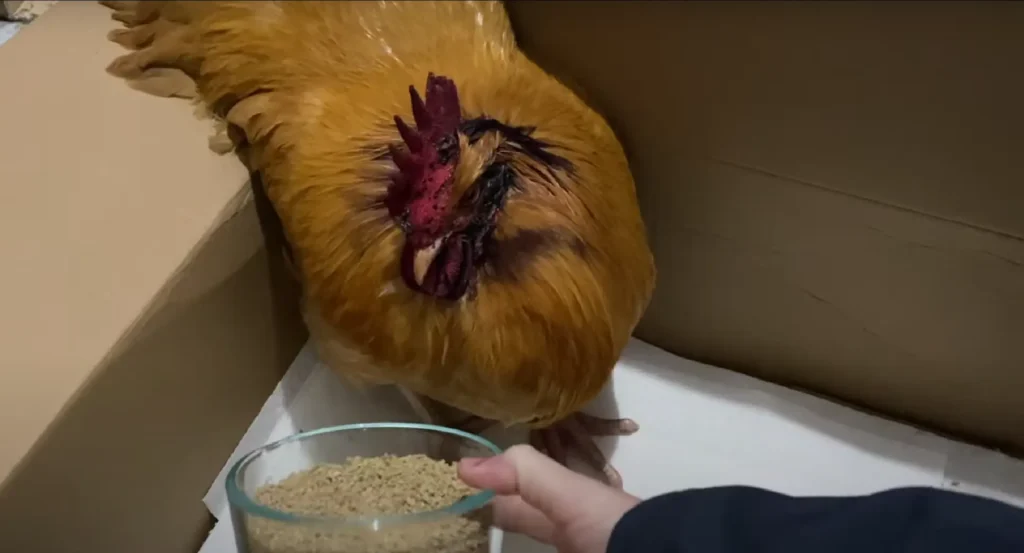
How to Minimize Chicken Wounds in the Future
To minimize the occurrence of wounds in your chickens in the future, you can take several key steps. First and foremost, ensure that their living environment is safe and secure. Regularly inspect their coop and surrounding area for potential hazards such as sharp objects or loose wires, and make any necessary repairs. Predator-proofing is also essential; use sturdy materials and secure locks to keep predators out.
Managing the dynamics within your flock is equally essential. Keep a balanced ratio of hens to roosters to prevent aggressive behavior and mating injuries. Provide plenty of space to reduce stress and competition, which can lead to pecking, cannibalism, and other injuries.
Good nutrition is vital to your chickens’ overall health and well-being. A balanced diet strengthens their immune system, making them less susceptible to infections if they get wounded. Also, consider implementing measures to deter pecking, like providing enough food stations and engaging toys or activities to reduce boredom.
Regular health checks are crucial for early detection and treatment of any issues before they become serious. Finally, educating yourself on proper chicken care and staying informed about best practices in poultry management can significantly reduce the risk of injuries in your flock. By being proactive and attentive to these aspects, you can create a safer and healthier environment for your chickens, significantly reducing the likelihood of wounds in the future.
Chicken Wound Care Summary
Effective chicken wound care is a vital skill for any chicken keeper. By following these steps, you can ensure that your chickens receive prompt and appropriate care in the event of an injury, leading to a better outcome and quicker recovery.
Always remember to consult with a veterinarian when in doubt or when deciding on the best course of action. Your proactive approach to wound management and prevention will go a long way in maintaining the health and happiness of your flock.

